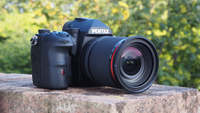Digital Camera World Verdict
If you like to shoot in black and white, there are some major advantages in a monochrome sensor. But this is such a niche area that monochrome cameras are few and far between, and even Pentax says it’s only producing small quantities of this camera at a time. It’s based on the Pentax K-3 III, so it feels strong, rugged and highly competent, but while the monochrome sensor is very sharp and has excellent high-ISO performance, the dynamic range is unexpectedly poor, at least as far as highlights are concerned, and you’ll still need to do some dodging and burning for that classic monochrome depth.
Pros
- +
Excellent pixel-level detail
- +
Usable image quality even at ISO 25,600
- +
Solid, great-handling construction
- +
Far cheaper than rival mono cameras
Cons
- -
AF is good, but lags behind current standards
- -
Monochrome files still look distinctly ‘digital’
- -
Surprisingly poor highlight recovery in raw
- -
You’ll need to buy some B&W filters!
Why you can trust Digital Camera World
What on earth is the point of a monochrome sensor when you can get black-and-white images from a regular camera? And yet Leica and medium format maker Phase One believe that only a monochrome sensor can deliver the quality that the most ardent black and white fans demand. Why?
It’s true that any regular digital camera can produce black-and-white images either in-camera or later in a photo editor, but they come with a technical compromise. The photosites on the sensor are sensitive only to light, not color, so in order to make sensors capture color images, the makers use a CFA (color filter array) overlaid on the photosites so that each one is sensitive to red, green, or blue light only. That’s no good on its own, so it needs an interpolation process to work out a full-color value for each photosite (pixel) based on those around it. The result of this interpolation process is a slight softening of fine detail and some noise and artifacts in the individual red, green, and blue color channels that make up the color image.
Usually, we don’t notice. But this extra processing does undermine the image quality to a degree and is totally unnecessary for black and white photography. So what Pentax has done is to take the regular Pentax K-3 III design and remove the color filter array from in front of the sensor.
This means that each photosite is now sensitive to all light, not just one particular color, so its light-gathering capabilities are improved. Better still, without this color interpolation process, the fine detail is crisper and sharper.
There are a couple of downsides. The obvious one is that you have a camera that’s actually incapable of shooting in color. The other is that there’s no way to adjust the tonal balance between the different colors in the scene in the way that you can when converting color images. With a monochrome camera like the Pentax K-3 III Monochrome, you have to go back to old-school black-and-white shooting using ‘contrast’ filters on the lens to adjust the tones. You might use a red filter, for example, to darken blue skies, or a yellow filter to lighten foliage in landscape shots.

The K-3 III Monochrome itself is a 24-megapixel APS-C DSLR of a type we’ve seen so often from Pentax, but this one is at the top of the APS-CC range, with a very rugged, strong-feeling body, 12fps continuous shooting and advanced (for Pentax) SAFOX 13 AF system with 101 focus points. This is for viewfinder shooting; if you use the live view mode, the camera reverts to slower but still effective contrast AF.
Is it one of the best DSLRs right now? Perhaps not. The regular Pentax K-3 III is itself a bit niche, combining last-generation DSLR tech with a fairly hefty price tag.
Like previous Pentax DSLRs, this one has Pentax’s in-built sensor-shift Shake Reduction system. Pentax is still the only DSLR to offer in-body stabilization. The 5-axis anti-shake mechanism is said to offer up to 5.5 stops of shake compensation, and it also offers an ‘Anti-aliasing Filter Simulator’. The sensor does not have a physical anti-aliasing (low pass) filter so this uses the sensor-shift tech to achieve an anti-aliasing effect and potentially reduce moiré effects in fine patterns and textures.
Pentax might appear to have chosen a single point in camera history and stayed there, but the K-3 III Monochrome does have some modern advances, such as USB-C charging. It can also shoot 4K video, though the contrast AF is unlikely to keep up too well with moving subjects.
There are a couple of notable changes for the Monochrome model. The minimum ISO has been increased to 200 to reflect the greater sensitivity of the photosites, and there’s no longer any need for a white balance control, since the camera does not record any color data – this button has been replaced with an ‘Fx’ button.
Pentax is clearly aiming for a particular kind of audience with this camera. The camera is, to quote the website, “Returning to the starting point of photography: capture images with light and shadow” Nicely put!

Pentax K-3 III Monochrome: Specifications
| Sensor | 25.7MP APS-C CMOS, monochrome |
| Lens mount | Pentax KAF2 |
| Screen | 3.2in 1.62m-dot fixed touchscreen |
| Viewfinder | Optical pentaprism, 100% coverage, 1.05x magnification |
| Image stabilization | 5-axis Pentax SR, 5.5 stops |
| Memory | 1 x SD UHS-II, 1 x SD UHS-I |
| Shutter speed | 1/8000 sec to 30 sec |
| Max shooting speed | 12fps, 37 JPEG, 32 raw |
| Exposure range | -3EV to +20EV |
| ISO | 100-1,600,000 |
| Autofocus | OVF 105-point phase detect inc 21 cross-type, live view contrast AF |
| Video | 4K UHD 30p, Full HD 60p |
| Connectivity | USB-C, HDMI (Type D), 2.5mm accessory, 3.5mm audio in, 3.5mm audio out, Wi-Fi, Bluetooth |
| Battery | D-LI90, 800 shots |
| Dimensions | 134.5 x 103.5 x 73.5mm |
| Weight | 820g body only, inc card and battery |
Pentax K-3 III Monochrome: Price
At a typical price of $2,197 / £1,949, the Pentax K-3 III Monochrome is significantly more expensive than the regular K-3 III. Pentax does say that it is being made in small batches and that the production and parts cost is higher. So is it worth the extra? That depends on how much value the rigorous approach of a black-and-white-only camera and the small gains in image quality in some areas (and losses in others). Having said that, the Pentax K-3 III Monochrome is by far the cheapest monochrome camera on the market. The next cheapest, the Leica Q2 Monochrom, is almost three times the price.
Pentax K-3 III Monochrome: Build and handling
The Pentax K-3 III Monochrome has typical Pentax DSLR handling. It feels strong, rugged and solid. And while the DSLR design is considered by some to be out of date, this one has kept up with many modern trends. It has USB-C charging, for example, and it can shoot 4K 30p video.
It does not follow the Pentax KF, though, in having hybrid on-sensor phase-detect AF. Instead, it follows the classic Pentax DSLR route of a phase-detect sensor for viewfinder shooting and slow-but-sure contrast AF in live view.

The viewfinder is rather good. It uses a pentaprism design, not a cheaper pentamirror, and offers 100% coverage and 1.05x magnification with a 50mm lens set to infinity – though it’s an APS-C camera, so that viewfinder magnification compares to around 0.75x on a full frame DSLR.
One unavoidable property of the optical viewfinder is that you see the world in color. That’s where mirrorless monochrome cameras with EVFs have an advantage.
You can switch between the OVF and live view via a dial handily placed on top of the camera. The live view is fed by the sensor, so this is actually in black and white. The display quality is very good, and the status display (when you’re using the viewfinder) is both clear and highly detailed – and there’s a second status display on the top panel for key shooting settings. The rear screen is fixed, so it doesn’t even have a tilt mechanism. That might be a deal-breaker for some but, in truth, it’s how DSLRs always used to be and not hard to adapt (or re-adapt) to.

The mode dial on this Pentax, as with other models, has a couple of interesting extras. As well as the usual P, Av, Tv and M modes, there’s a TAv mode and an Sv mode. These effectively bring the ISO setting into the exposure triangle. In TAv mode, you can set both the shutter speed and the lens aperture manually, and the camera will then adjust the ISO setting to give the correct exposure. In Sv mode, you set the ISO and the camera adjusts the shutter speed and aperture automatically.
This is no different, of course, to using auto ISO or setting the ISO manually, but by adding these modes to the mode dial, Pentax makes the ISO a central part of the exposure modes, not a separate setting.
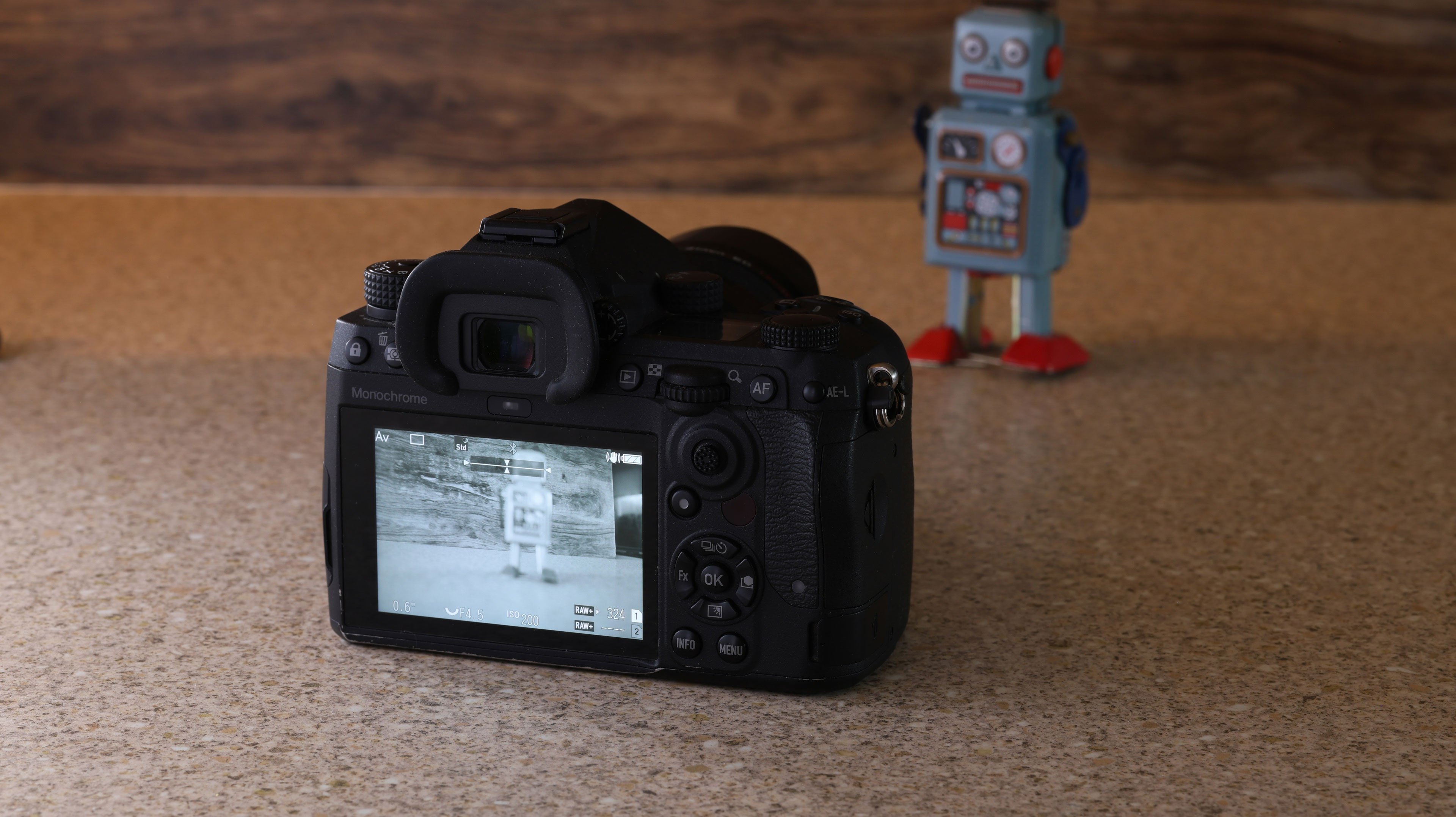
The shutter release has a nice, light feel. Pentax says it has used a leaf shutter design for a lighter, smoother action and reduced shake. It’s a pretty durable shutter too, with a quoted life of 300,000 actuations.
The K-3 III body has magnesium alloy top, bottom, front and rear panels and is both dust and weather resistant. Pentax says it’s designed to operate down to temperatures of -10°. The Monochrome model also offers a black and white interface (a nice touch) and a silver/gray paint scheme for the icons on buttons and switches.


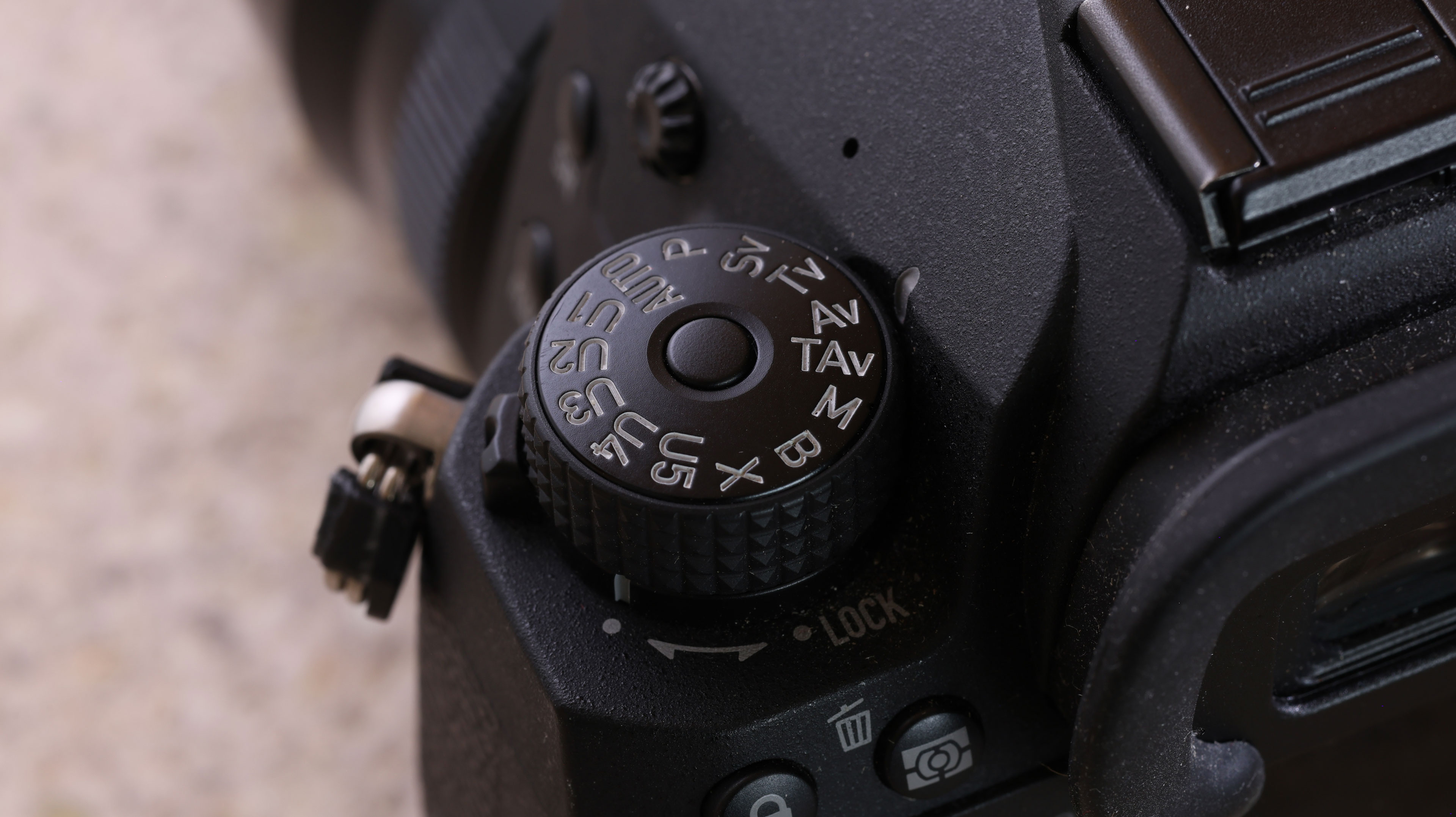

Pentax K-3 III Monochrome: Performance
Physically, the Pentax K-3 III Monochrome performs much as you would expect for a recent DSLR design. The 101-point phase-detect viewfinder AF is positive and reasonably fast, though this will depend on the lens you’re using, as some older/cheaper Pentax lenses are neither quick nor quiet.
The 12fps continuous shooting speed is impressive on paper, but the limited buffer capacity will restrict you to short bursts only – that seems a serious failing on a flagship camera.
In terms of image quality, it’s a mixed bag – though mostly positive. Pentax says the removal of the color filter array gives sharper images with less noise, and that certainly seems to be true. At a pixel level, the definition is extremely crisp, though this will, as ever, depend on the quality of the lenses you’re shooting with. I also took the Pentax on a night-time photo walk with the ISO set to 25,600 (very high indeed for an APS-C sensor) and the images show a hard but tight grain pattern that’s actually quite attractive and good contrast.

There’s also the question of tonality, another theoretical advantage of the monochrome sensor. Without the color interpolation of regular cameras, tonal gradations should be smoother. Maybe so, but there is both a technical drawback and, as I found, a practical one.
Because you’re shooting in mono only, you won’t get the chance to vary the color channel strengths later to simulate the effects of black and white filters. You are actually going to have to use the real thing to darken blue skies, for example, or lighten foliage in landscapes. That sounds fine as an exercise in photographic purity until you actually have to go out and pay for them.
The other issue I had was poor highlight recovery in raw files. I’m used to relying on 1-1.5EV of highlight recovery with regular cameras, but with the K-3 III Monochrom at best I got around 0.6EV. That’s a much lower margin of error than I’m used to, and probably many other photographers too. When shooting outdoors you do need to pay special attention to the exposure of bright skies if you want to retain any detail in them.
Shooting at night was also a chance to test the camera’s SR (Shake Reduction) system. Pentax claims up to 5.5 stops of shake compensation, but I would probably only rely on 2-3. This is normal for camera makers’ shake reduction claims! It’s definitely worth having, and no other DSLR maker has this. Keep in mind, though, that a sensor shift system like this has no effect on the optical viewfinder image. You’ll only get much sense of the stabilization effect if you’re using live view.
Speaking of which, this proved surprisingly effective. It’s naturally a lot slower than a modern mirrorless camera’s hybrid AF, but still perfectly usable, even handheld.

Pentax K-3 III Monochrome: Sample images
This first set of images was captured handheld during a night-time photo walk with the camera set to ISO 25,600 to allow for an aperture of f/4 and reasonable depth of field. The results are noisy, naturally, but it's perfectly acceptable noise and the overall results are unexpectedly good.






This second set of images was taken on a day with hazy sun. The tonality is nice and the detail is excellent, but the bright skies really showed up the sensor's lack of highlight latitude, and yes, that's shooting raw.



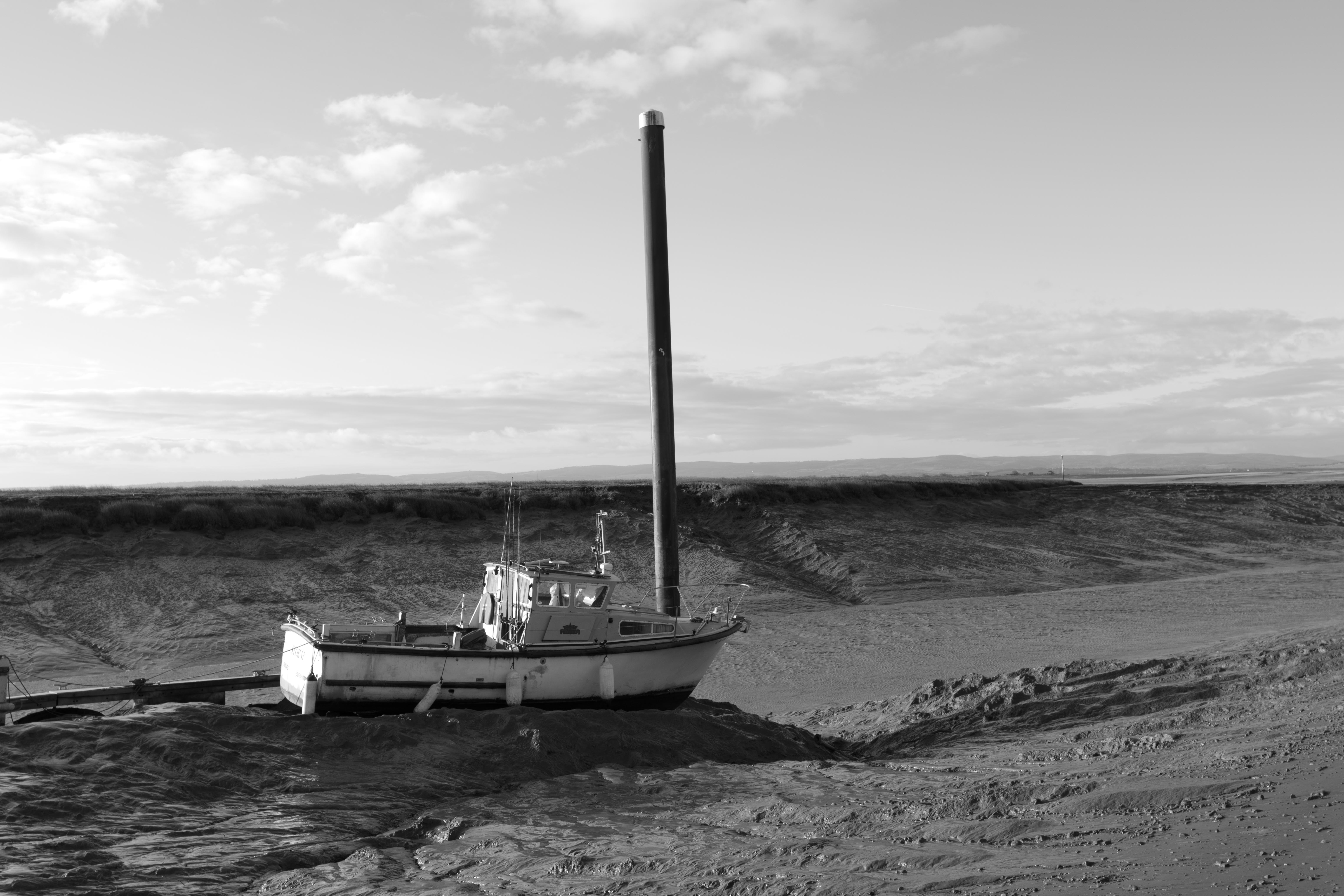




Pentax K-3 III Monochrome: Lab results
For our lab data comparison we compared the K3 III Monochrome to the standard K3 III, along with two other monochrome cameras: the Leica Q2 Monochrom, and the M11 Monochrom. While these Leica cameras aren't direct rivals to the K3 III Monochrome in style or price, they do at least share the same black-and-white ethos.
Resolution (line widths/picture height):
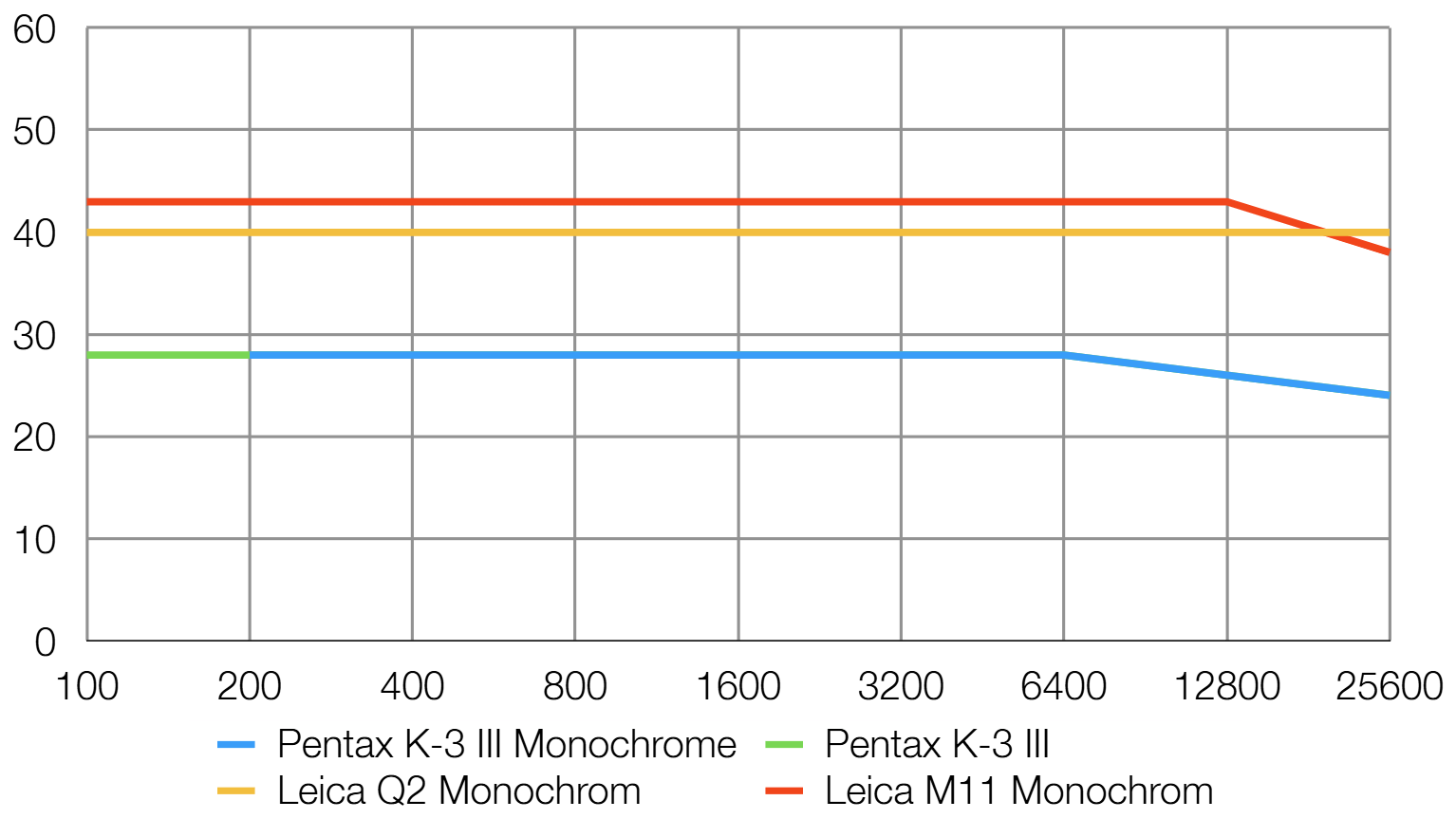
Seeing as both Pentax cameras have the same pixel count, it's no surprise they both resolve near-identical amounts of fine detail throughout our tested sensitivity range. Both Leica cameras are full-frame, and both have much larger megapixel counts - they were always going to trounce the APS-C Pentax when capturing outright detail.
Dynamic range (EV):
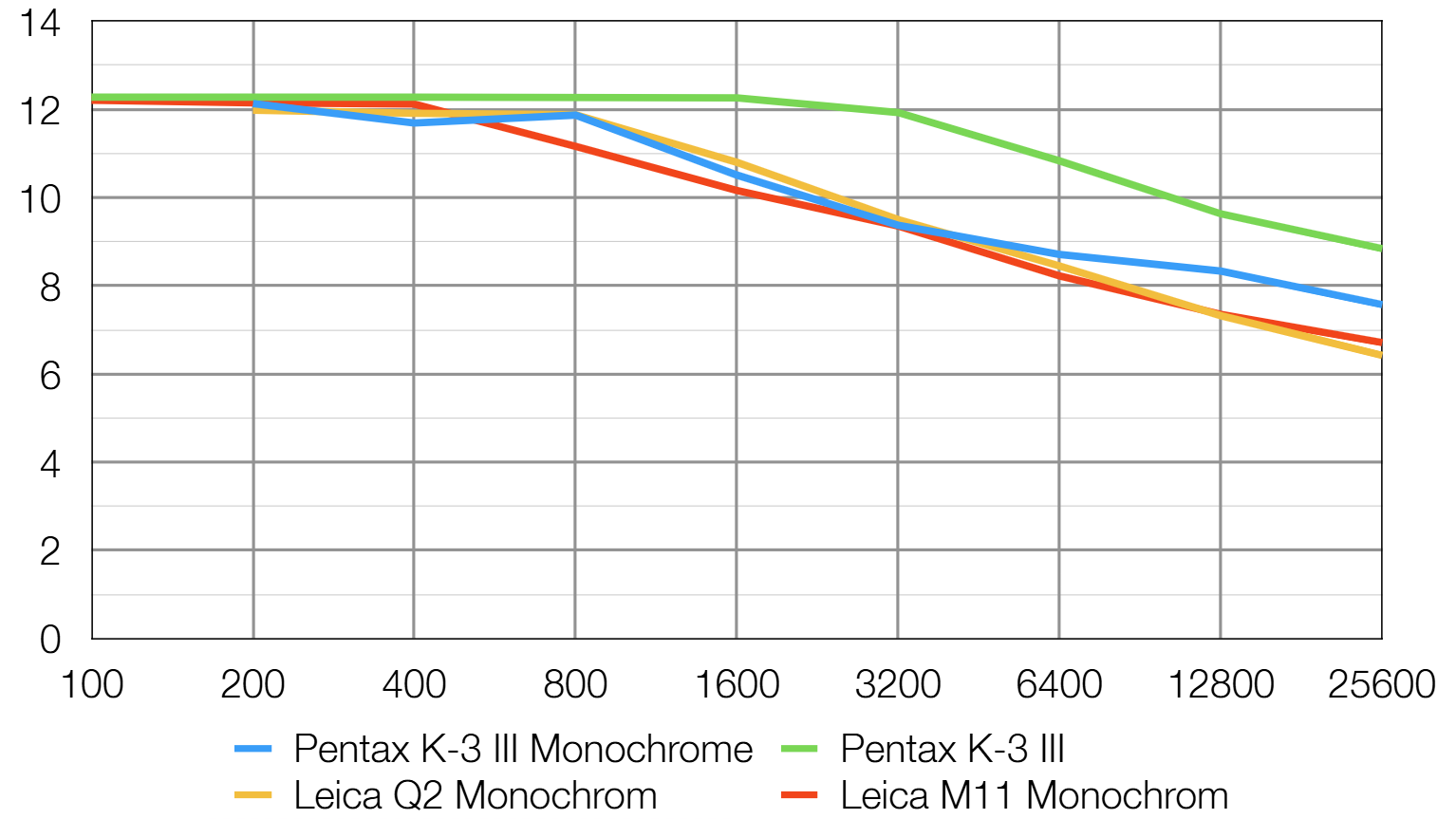
Dynamic range is a measure of a camera's ability to record extreme brightness ranges and still retain detail in the brightest and darkest parts of the scene. It's measured in EV (exposure values, or 'stops').
The K3 III Monochrome is able to pretty much equal the two full-frame Leica mono cameras for dynamic range, even beating them by around 1-stop at the highest ISOs. However, the standard K3 Mark III is in a league of its own once you push past ISO 800.
Signal to noise ratio (decibels):

This test compares the amount of random noise generated by the camera at different ISO settings as a proportion of the actual image information (the 'signal'). Higher values are better and we expect to see the signal to ratio fall as the ISO is increased.
Both Pentax cameras generate similarly low amounts of grain and noise, which we'd expect given their identical sensor size and megapixel count. Even the full-frame Leica cameras are unable to conclusively beat the image clarity from the K3 III Monochrome.
Pentax K-3 III Monochrome: Verdict
Pentax deserves proper credit for seeing an opportunity to combine a classic camera design with a classic style of shooting. The use of a monochrome sensor can’t just be written off as a hipster novelty – it does have profound advantages over regular color sensors for monochrome capture. Of course, it has restrictions. The K-3 III Monochrome is incapable of color photography, and as a side effect you don’t get the opportunity to use ‘channel mixing’ techniques to modify the black and white rendition. You are going to have to use real filters (remember those?).
But the K-3 III Monochrome does have a couple of downsides. It’s a classic DSLR design, and not a terribly modern one, that won’t necessarily suit a generation raised on mirrorless. And, on a practical level, its poor highlight recovery from raw files is unexpected and fits badly with the Pentax’s monochrome aspirations.
The thing is, though, that if you do want to get a dedicated mono camera, this is the cheapest there is, and by a long way. Until now, monochrome fans would need to look to expensive Leica Monochrom models or Phase One’s stratospherically expensive medium format Achromatic backs. For that reason alone the Pentax K-3 III Monochrome deserves some praise.
| Features | An old-school DSLR, quite well specified but with limitations | ★★★☆☆ |
| Design | Tough, strong and solid with nice controls, though the fixed rear screen could annoy | ★★★★☆ |
| Performance | Mostly good, but some aspects are disappointing | ★★★★☆ |
| Value | Expensive for an APS-C DSLR, but not for a monochrome camera! | ★★★★☆ |
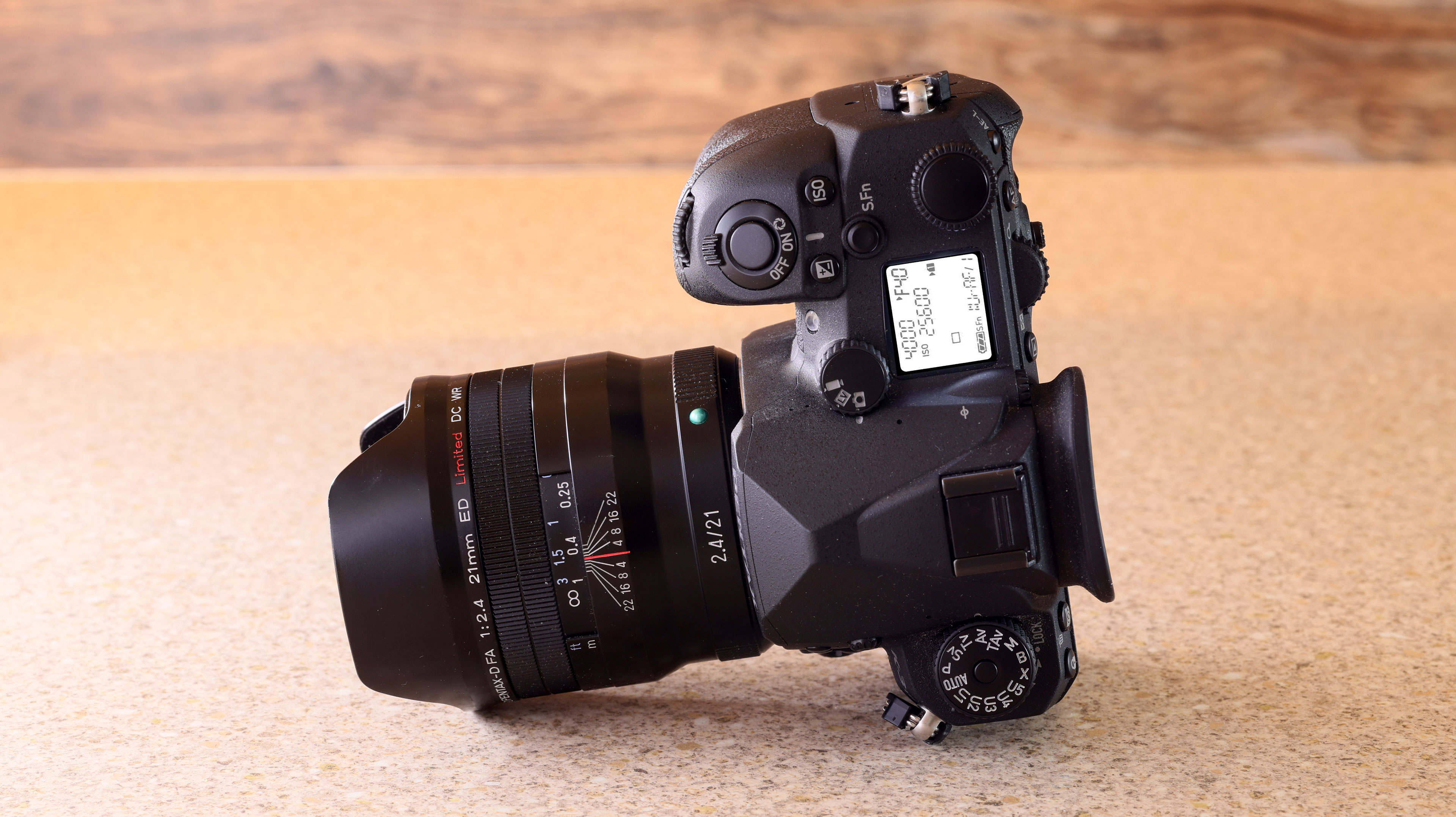

Should you buy the Pentax K-3 III Monochrome?
✅ Buy this...
- If you hanker for the days of black and white film
- If you want the highest fidelity black and white capture
- If you were looking at a Leica Monochrom but couldn't face the cost!
🚫 Don't buy this...
- If you want to keep the editing scope of regular color capture
- If you're not that fussed about pixel level detail or ultra-high ISO image quality
- If you rely on highlight recovery when editing your raw files
Alternatives
The regular Pentax K-3 III is a good deal cheaper to buy and more readily available. It doesn't have quite the black and white quality of the Monochrome model but makes up for it with more editing scope later on.
The next step up from the Pentax is the Leica Q2 Monochrom which is fiendishly expensive and comes with a fixed lens – or there's the even more expensive Leica M11 Monochrom, which is to be honest, in a different league.

Rod is an independent photography journalist and editor, and a long-standing Digital Camera World contributor, having previously worked as DCW's Group Reviews editor. Before that he has been technique editor on N-Photo, Head of Testing for the photography division and Camera Channel editor on TechRadar, as well as contributing to many other publications. He has been writing about photography technique, photo editing and digital cameras since they first appeared, and before that began his career writing about film photography. He has used and reviewed practically every interchangeable lens camera launched in the past 20 years, from entry-level DSLRs to medium format cameras, together with lenses, tripods, gimbals, light meters, camera bags and more. Rod has his own camera gear blog at fotovolo.com but also writes about photo-editing applications and techniques at lifeafterphotoshop.com
You must confirm your public display name before commenting
Please logout and then login again, you will then be prompted to enter your display name.

